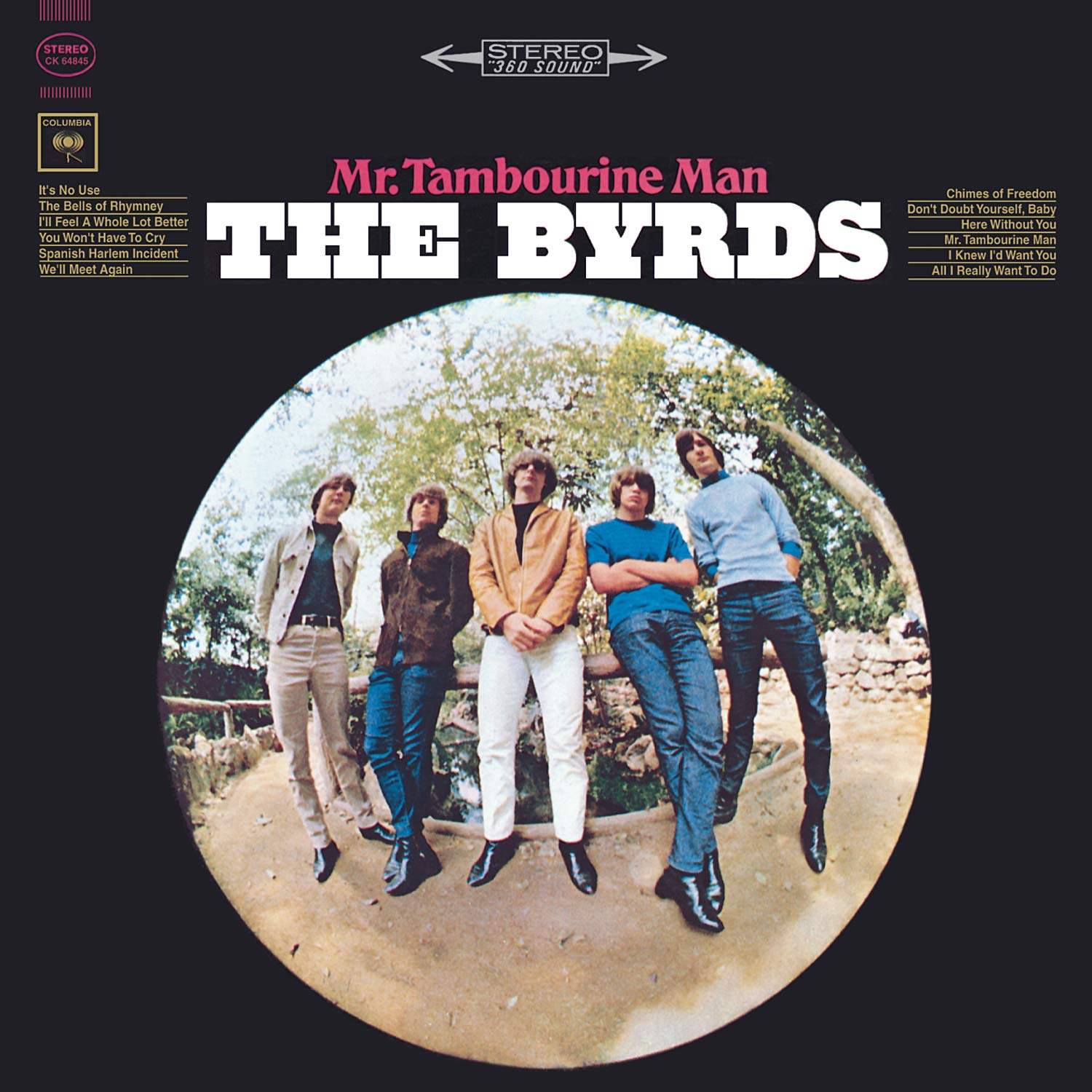
Well, it turned out that Rickenbacker guitars were made right there in Southern California. And there's George Harrison playing that Roger McGuinn thought that's fantastic, that's what I'm going to do, I'm going to get a guitar just like that. If you looked at it straight on, had six pegs just like the normal guitar, but if you turned it sideways, you would see that there were six more pegs for the extra six strings that added up to twelve. Now McGuinn had been playing a twelve string acoustic guitar, but this Rickenbacker electric twelve string had six pegs. But they noticed that in that guitar, in that Movie, George Harrison is playing a Rickenbacker twelve string guitar. First, like everybody else, they were totally enraptured by the Beatles and Beatlemania and all was going, this is fantastic. And so the guys from The Birds went to see A Hard Day's Night. but then A Hard Day's Night came out in the summer of 1965. New Christie Mitchells or something like that. Initially doing it with an acoustic twelve string, very much like you know, a kind of folk revival group from the first half of the 1960s. And The Byrds heard it, and so they started working up this version of Dylan's Mr Tambourine Man. But the guy that was producing The Byrds at the time, Terry Melcher got a hold of this recording. Something about the playing on it was out of tune and they decided not to use it. And as the story goes, Rambling Jack Elliott had been on the, the, the recording they'd done. But it's a Dylan song that Dylan hadn't yet recorded. And they used to have a song that they did called Mr Tambourine Man, which was a Dylan song.

their first, the, the first collections of, the first version of The Birds was called The Beefeaters. but you could already see the beginning of, of McGuinn wanting to go in the direction of what the Beatles did. and so McGuinn makes his way out to LA, starts doing his folk routine, his, has folk act, doing traditional folk songs, and also playing songs, Beatles songs in his, in his folk act which I guess was a little bit a little bit strange for the day. And so, there was a lot of sophisticated people out there who involve the production, there were good recording studios, this kind of thing.
#The byrds bob dylan movie#
One of them is the television and the movie business were out there. There is a lot of natural attractions to Los Angeles.

In fact, between the beginning of the 60s and the end of the 60s, you can really see the music business in this country really, in large part, migrate from New York to Los Angeles. But at this point in time, there's kind of a, the beginnings of a real migration toward the west coast in the music business. That group McGuinn and Crosby emerged out of the Greenwich Village folk scene as, as many of the other musicians did. The Byrds started by Roger McGuinn, a guitarist, along with David Crosby, Gene Clark, Chris Hillman, and Michael Clarke. We have to talk about the music of The Byrds, because it's sort of intimate, well in many ways it's intimately related with what was going on with Dylan. often together with the story that we've heard about Bob Dylan the summer of 65 the Newport Folk Festival Like a Rolling Stone and all that went that, with that. Ver programaīob Dylan was an important figure in the American response during the mid-1960s, but he certainly wasn't the only one that was, that was making a difference in sort of fending off, if you will, the, the British acts who were, who were so dominating the charts during this period. We will follow the story of how this rowdy first wave of rock and roll (1955-59) was tamed in the early 60s but came roaring back with the Beatles and the Rolling Stones and then went psychedelic by the end of the decade. This new style became the music of the emerging youth culture and was often associated with teen rebellion.

Rock emerged in the mid 1950s as a blending of mainstream pop, rhythm and blues, and country and western-styles that previously had remained relatively separate. We will also explore how developments in the music business and in technology helped shape the ways in which styles developed. This course covers the music of Elvis Presley, Chuck Berry, Phil Spector, Bob Dylan, the Beatles, the Rolling Stones, Jimi Hendrix, Cream, and many more artists, with an emphasis both on cultural context and on the music itself. This course, part 1 of a 2-course sequence, examines the history of rock, primarily as it unfolded in the United States, from the days before rock (pre-1955) to the end of the 1960s.


 0 kommentar(er)
0 kommentar(er)
